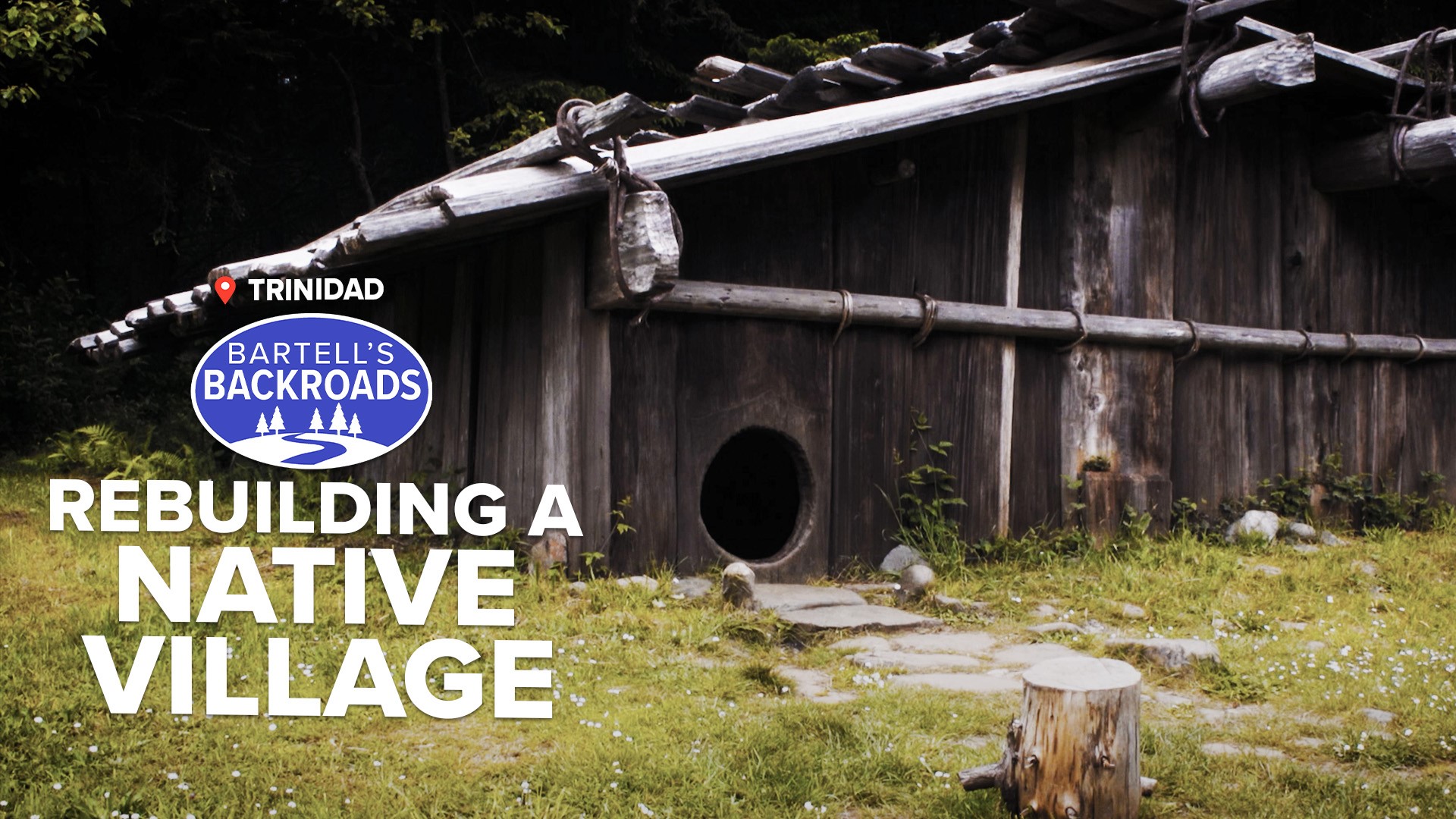TRINIDAD, Calif. — You can't change the past, but you can make changes in the present. At Sue-meg State Park, changes have been made that have brought the present closer than ever to the land's traditional past.
Long before state park interpreter Keseloh McQuillen began guiding visitors into a special clearing of Humboldt County redwood trees, the land was called Patrick's Point. It was named after homesteader Patrick Beegan.
“He caused violence in the Yurok community,” said McQuillen.
The land was McQuillen's ancestral home, and a Yurok tribal village once stood in the area. In 1864, Beegan brought in an armed militia which massacred villagers and ultimately made room for more homesteaders to take over Yurok land.
“His name kind of stuck here and so that's why it was named Patrick’s Point State Park until it was changed,” she said.
It would take the Yurok tribe a decade of petitioning the state but eventually, in September of 2021, Patrick's Point State Park became Sue-meg State Park. Today, the park includes a recreation of the Yurok village and the homes that once stood here.
“Yurok traditional plank houses have a unique type of engineering,” said McQuillen of the redwood plank homes. Their signature entries were very small circular holes, built to keep out predators.
GET MORE RACE & CULTURE FROM ABC10:
►Explore the Race & Culture home page
►Watch Race & Culture videos on YouTube
►Subscribe to the Race and Culture newsletter
After the massacre at Patrick's Point, Yurok all across Humboldt County were forced into reservations, and their traditional homes were destroyed.
As reservations grew in the early 1900s, the U.S. government did their best to erase the Yurok's indigenous culture. Skills, lifestyle, beliefs and the native language were nearly lost, but with the help of tribal elders, the plank houses were rebuilt to preserve the traditional way of living.
“Everything is enclosed and you don’t have a lot of natural light within your (modern) house. So, here we would have the ability to take the planks off and on when you needed,” said McQuillen.
Everything at Sue-meg was built using traditional tools and natural materials, like grapevine ties and hand-split boards from fallen redwoods.
“We just believe that redwood houses us and takes care of us and helps us transport each other. So, it’s a very complex system that we truly believe kind of relies off of each other,” said McQuillen.
From the sweat lodge to the traditional dress house, visitors are free to explore the village. The purpose of Sue-meg State Park is to encourage visitors to examine the past and reflect on the nearly lost culture of indigenous people.
“I just hope visitors understand that this spot is special to us, and this is our home and we are here forever and will continue to steward these places until future generations take over,” said McQuillen.
We want to hear from you!
The Race and Culture team's mission is to serve our diverse communities through authentic representation, community engagement and equitable reporting. Accomplishing our goals of inclusive reporting requires hearing from you. Is there a person or place that you want us to highlight? Email us at raceandculture@abc10.com or fill out the form below.



















